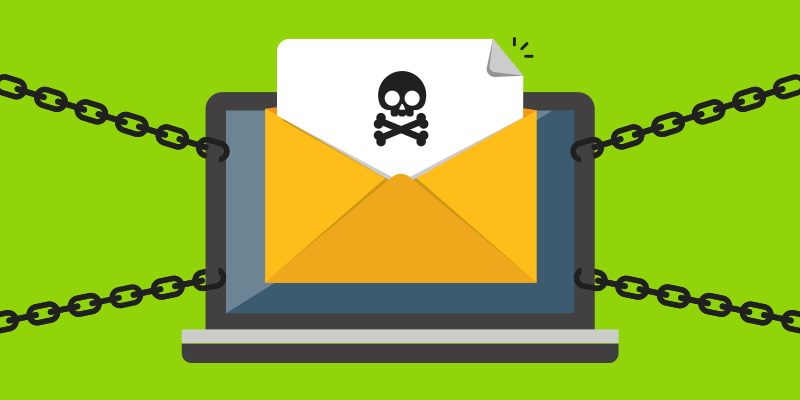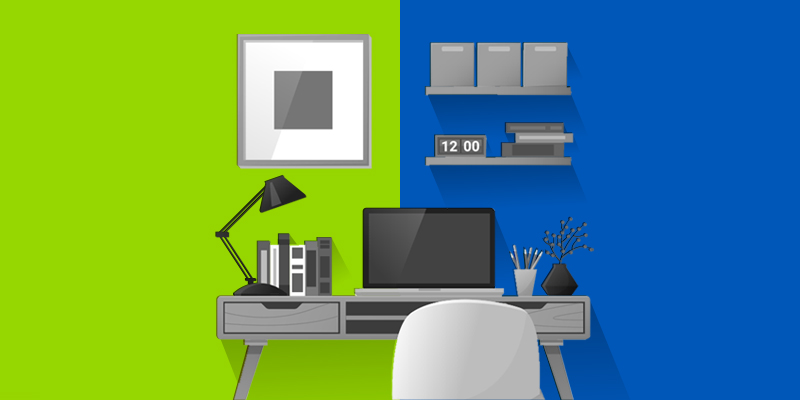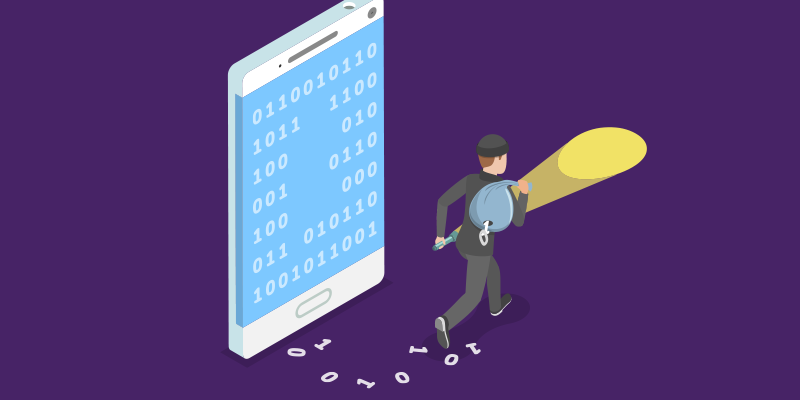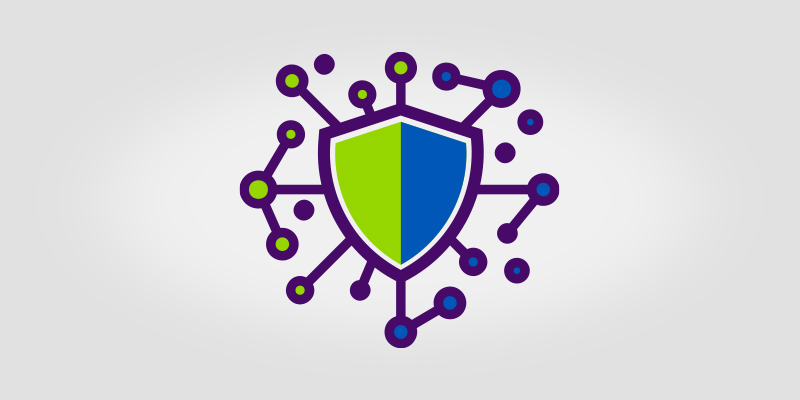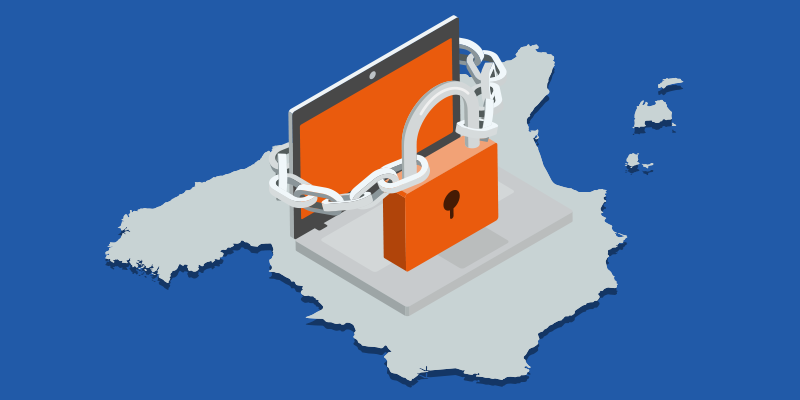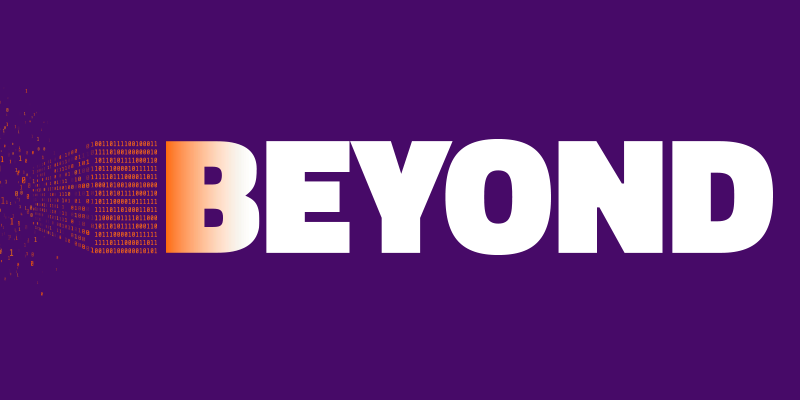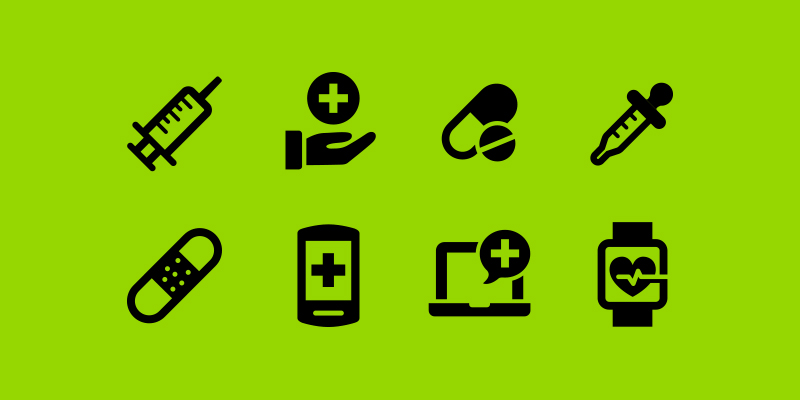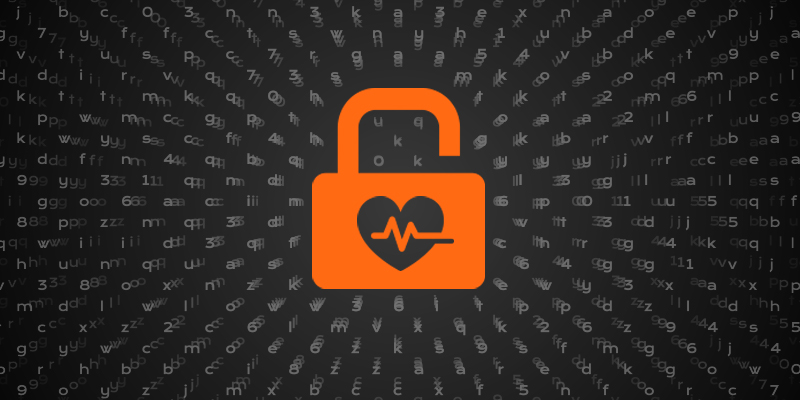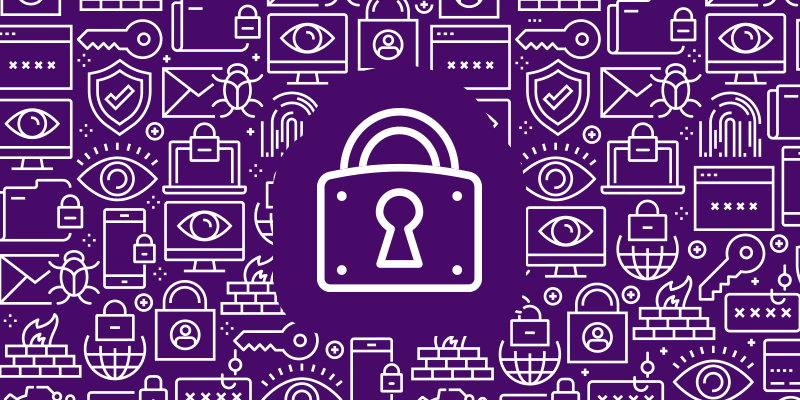Simplified Two-factor Authentication for Webroot
Webroot has evolved its secure login offering from a secondary security code to a full two-factor authentication (2FA) solution for both business and home users.
Webroot’s 2FA has expanded in two areas. We have:
- Implemented a time-based, one-time password (TOTP) solution that generates a passcode which is active for only a short period of time.
- Given our users the option to either opt-in or opt-out, especially those that leverage Webroot for home and personal use.
Starting in December, with the new updates, users will find it easier to use industry-vetted options, including Google Authenticator, Microsoft Authenticator, LastPass Authenticator, and Authy 2-Factor Authentication.
Why Two-Factor Authentication?
First and foremost, we encourage all users to opt-in to maintain a higher level of security. Two-factor authentication adds an extra layer of security to your basic login procedure. When logging into an account, the password is a single factor of authentication, and requiring a second factor to prove you are who you say you are adds a layer of security. Each layer of security you add exponentially increases protection from unauthorized access and makes it harder for brute force and credential stuffing attacks to occur.
A Note to Businesses
Users will have the option to opt-in or opt-out of the new Webroot 2FA feature. The Admins tab within our console will show you which of your users have or have not enabled 2FA.
To learn how to enable two-factor authentication, visit the Webroot Community.
Cyber News Rundown: Shade Ransomware Most Distributed Variant
Shade Ransomware Takes Crown as Most Distributed Variant
Over the course of 2019, one ransomware variant, known as Shade, has taken over 50 percent of market share for ransomware delivered via email. Otherwise known as Troldesh, this variant receives regular updates to further improve it’s encrypting and methods of generating additional revenue from both cryptomining and improving traffic to sites that run ads. In just the first half of 2019, attacks using Troldesh dramatically rose from 1,100 to well over 6,000 by the second calendar quarter.
PayMyTab Leaves Customer Data Exposed
For more than a year sensitive customer data belonging to users of the mobile payment app PayMyTab has been publicly exposed in an online database using no security protocols. Even after being contacted multiple times regarding the data breach, the company has yet to fully secure customer data and may have to take drastic measures to fully secure their data storage after allowing virtually unlimited access to anyone with an interest in personal data.
Credentials Dump for Major Service Sites
Login credentials for two highly-trafficked websites were discovered in a data dump earlier this week. One dump belonged to GateHub, a cryptocurrency wallet with potentially up to 1.4 million user credentials stolen, including not only usernames and passwords, but also wallet hashes and keys used for two-factor authentication. The second dump contained information on 800,000 users of EpicBot, a RuneScape bot used to automate tasks in the skill-centric MMORPG. While both dumps appeared on dark web marketplaces on the same day, it also seems coincidental that both sites use bcrypt hashing for passwords, which should make them exceedingly difficult to crack assuming it was set up properly.
Louisiana Government Systems Hit with Ransomware
Multiple Louisiana state service sites were taken offline early Monday morning following a ransomware attack that affected mostly transportation services. All 79 of the state’s DMV locations were forced to close until systems were returned to normal, as they were unable to access DOT services to assist clients. While it is still unclear what variant of ransomware was used, the state of Louisiana did have a cybersecurity team in place to stop any further spread of the infection.
Magecart Targets Macy’s Online
Nearly a week after the initial breach, Macy’s officials noticed some unauthorized access between their main website and an undisclosed third-party site. The breach itself appears to have compromised payment card data for any customers who input their credentials during the first couple weeks of October. Macy’s has since removed the illicitly added code from their sites as well as contacted both payment card providers and affected customers regarding the breach.
5 Tips for Feeling Your Best in Your Home Office
With major advancements in communication technology, many of us are fortunate to be able to work from home. Working from home can be a huge productivity boost—saving you gas and time by not commuting, plus you get to work more on your own terms. If you’re able to work from home here are five tips to make sure you stay productive and feeling good in your home office.
Get Comfortable
Not so comfortable that you fall asleep, but we all know how miserable an uncomfortable office chair can be. By working at home, you have the opportunity to completely build your own environment. That means finding the right furniture for you.
If you’re looking for a high-quality office chair, an underrated place to look is gaming chairs, which were built for long hours of sitting. However, a high-quality chair from your local furniture store would likely also do the trick.
Or, maybe instead of sitting all day, you prefer to stand. Luckily, there is an abundance of standing desks available for your choosing, many of which are easily adjustable so you can alternate between sitting and standing.
In addition to ergonomics, you also want to think about how to decorate your home office. For example, having plants in your office can actually help reduce stress and improve productivity. If you can, try to choose a room that has lots of natural lighting, which can help you stay healthy, concentrated, and even sleep better at night.
However you want to set up your home office, it’s important that you do what’s most comfortable for you.
Limit Distractions…But Not Too Much
If you’re going to be working from home, you may have to deal with more distractions than you would in the office, especially if you have pets or family moving around the house. Because of this, it’s important you try to limit distractions, not letting your eyes wander to the television or Facebook. After all, you may be the only one keeping yourself accountable.
If you have people in the home who could be distracting, make sure you choose an office space that has a door, possibly in a more remote part of the home, rather than working in common spaces. It’s a good idea to also ask your friends and family members to respect your work hours.
At the same time, you will need breaks from time to time, so don’t be afraid to keep distractions at hand, but out of sight. If you know that you struggle with concentration without someone looking over your shoulder, there are a number of apps you could try that help promote focus and productivity.
Secure Your Devices
Now that you are in charge of your own office, you may also be in charge of making sure that it is secure. Namely, you want to make sure you have proper cybersecurity measures in place. This will help you keep peace of mind while you’re working, but also ensure you’re not derailed by cybercriminals or unexpected computer failures.
First and foremost, you want to make sure your devices and data are protected with a consumer antivirus (AV) or endpoint protection. If your company consists only of you or you are working remotely from your personal computer, a consumer AV may be right for you. However, if your company has a few employees and you need to manage multiple endpoints, a business endpoint solution is a better option.
Regardless of which solution is right for you, it’s important to remember that all security products are not created equal. The top antivirus and endpoint protection products are cloud-based, have a small digital footprint—meaning they won’t slow down your computer—are actively protecting against known and never-before-seen threats, and are able to reverse any damage that occurs if your device is compromised.
Another measure you should consider is backing up your data. While this can be done using a physical external hard drive, they can also be compromised when plugged in. The best option is using a cloud-based backup and recovery service.
Ransomware attacks alone increased over 350 percent in 2017 and have since become more sophisticated, targeting larger victims including government organizations. Given that, protecting your devices and your data is no longer a luxury. It’s a necessity.
Declutter Often
We all know how cluttered a desk can get. Depending on your job, you may have papers strewn about, multiple desktops, or a pile of sticky notes in shorthand you can no longer quite decipher. But a cluttered environment can lead to a cluttered mind.
In fact, Lynne Gilberg, a professional organizer in Los Angeles, CA told WebMD, “Clutter is bad for your physical and mental health…A lot of people express that they are overwhelmed. They become nonfunctional and nonproductive.” It’s important to keep your area organized and tidy to be more productive and creative in the long run.
Plus, remember that this is still your home, and you may not want your family or guests to consider your office an eyesore. If you’re ever overwhelmed by chaos in your home office, here are some tips for helping clean up your work area.
Separate Personal and Professional
When working from home, it’s easy to blur the lines between your personal and professional lives. However, it is important that you resist this tendency to blend the two. Thinking too much about work at the dinner table can disconnect you from family and friends. And managing day-to-day family tasks while on the clock can hurt productivity.
You may want to establish strict working hours to help keep your two home lives separate. Let’s say from 8-5 you concentrate on work and then, after five p.m., you concentrate on your family, friends, and anything else that may need to get done around the home.
Looking to build a more complete, detailed schedule? The New York Times highlighted some tips for building a work-from-home schedule that will help you stay on task and stay productive.
Some Final Tips for Your Home Office
- Consider getting exercise equipment for short breaks. Things like resistance bands, small weights, or even a treadmill can help keep your blood flowing on a long work day.
- Stock up on supplies. You’ll still need pens, paper, and other work supplies in your home office. Make sure you are always stocked.
- Dress for work. Just because you have the option to work in your underwear, doesn’t mean you should.
To learn more about how criminals are targeting the healthcare industry, as well as what needs to be done about it, check out the second installment of this blog: Healthcare Cyber Threats That Should Keep You up at Night.
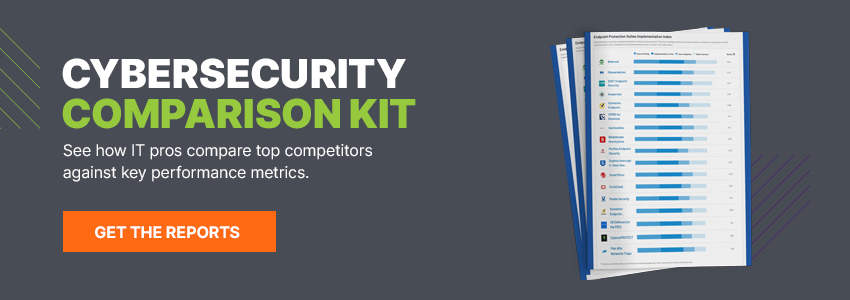
Cyber News Rundown: Orvis Password Leak
Orvis Internal Credentials Leaked
A database containing login credentials for numerous internal systems belonging to Orvis, one of America’s oldest retailers, was found to be publicly available for an unknown amount of time. Why the database was publicly accessible at all is still unclear, but the retailer has determined that many credentials were for decommissioned devices. They managed to resolve the security dilemma for the remaining devices relatively quickly.
Mexican Oil Company Hit by Ransomware Attack
A few days ago, Pemex Oil was targeted by a ransomware attack that, according to reports, affected 5% of their computer systems. The demanded ransom, as displayed by the note left by the DoppelPaymer ransomware variant, was 565 bitcoins, or roughly $4.9 million. Fortunately, Pemex had a decent security strategy in place and was able to get their operations running normally by the following day.
Facebook Bug Turns on iPhone Cameras
The latest bug from Facebook is one that turns on the user’s iPhone camera when they open the Facebook app. It appears the bug only works on phones running iOS version 13.2.2, and for users who accepted permissions to allow the app to access the camera. Unfortunately for Facebook, many of its users are already wary of the company’s privacy policies, and so-called “bugs” like this one only serve to increase the level of distrust within its customer base.
PureLocker Ported to All Major Operating Systems
A new ransomware variant, PureLocker, has been successfully ported from Windows® operating systems to both MacOS® and Linux® systems with the typical capacity to fully encrypt all discovered files. Researchers have found that it encrypts files on compromised systems using .CR1 as the file extension, a tag which also appears in the text-based ransom note. This may be tied to a particular affiliate, as PureLocker is being distributed as Ransomware-as-a-Service.
Cyberattack on UK Labour Party
Officials for the UK Labour Party have issued a statement regarding a cyberattack on their computer systems, though it appears that the security they had in place was enough to repel the attack. While they are still unsure as to the origin of the attack, they were able to determine that it was a DDoS attack (Distributed Denial of Service), which floods the targeted systems with an overwhelming amount of cyber-traffic.
Shoring Up Your Network and Security Policies: Least Privilege Models
Why do so many businesses allow unfettered access to their networks? You’d be shocked by how often it happens. The truth is: your employees don’t need unrestricted access to all parts of our business. This is why the Principle of Least Privilege (POLP) is one of the most important, if overlooked, aspects of a data security plan.
Appropriate privilege
When we say “least privilege”, what we actually mean is “appropriate privilege”, or need-to-know. Basically, this kind of approach assigns zero access by default, and then allows entry as needed. (This is pretty much the opposite of what many of us are taught about network access.) But by embracing this principle, you ensure that network access remains strictly controlled, even as people join the company, move into new roles, leave, etc. Obviously, you want employees to be able to do their jobs; but, by limiting initial access, you can minimize the risk of an internal breach.
If you haven’t already, now is the perfect time to take a look at your network access policies. After all, it’s about protecting your business and customers—not to mention your reputation.
Navigating the difficult conversations around access control
It’s no surprise that employees enjoy taking liberties at the workplace. In fact, Microsoft reports that 67% of users utilize their own devices at work. Consequently, they may push back on POLP policies because it means giving up some freedom, like installing personal software on work computers, using their BYOD in an unauthorized fashion, or having unlimited usage of non-essential applications.
Ultimately, you need to prepare for hard conversations. For example, you’ll have to explain that the goal of Principle of Least Privilege is to provide a more secure workplace for everyone. It’s not a reflection on who your employees are or even their seniority; it’s about security. So, it’s essential for you, the MSP or IT leader, to initiate the dialogue around access control––often and early. And, at the end of the day, it’s your responsibility to implement POLP policies that protect your network.
Firewalls and antivirus aren’t enough
There’s a common misconception in cybersecurity that the firewall and/or antivirus is all you need to stop all network threats. But they don’t protect against internal threats, such as phishing or data theft. This is where access policies are necessary to fill in the gaps.
Here’s a prime example: let’s say you have an employee whose job is data entry and they only need access to a few specific databases. If malware infects that employee’s computer or they click a phishing link, the attack is limited to those database entries. However, if that employee has root access privileges, the infection can quickly spread across all your systems.
Cyberattacks like phishing, ransomware, and botnets are all designed to circumvent firewalls. By following an appropriate privilege model, you can limit the number of people who can bypass your firewall and exploit security gaps in your network.
Tips to achieve least privilege
When it comes to implementing POLP in your business, here are some tips for getting started:
- Conduct a privilege audit. Check all existing accounts, processes, and programs to ensure that they have only enough permissions to do the job.
- Remove open access and start all accounts with low access. Only add specific higher-level access as needed.
- Create separate admin accounts that limit access.
- Superuser accounts should be used for administration or specialized IT employees who need unlimited system access.
- Standard user accounts, sometimes called least privilege user accounts (LUA) or non-privileged accounts, should have a limited set of privileges and should be assigned to everyone else.
- Implement expiring privileges and one-time-use credentials.
- Create a guest network leveraging a VPN for employees and guests.
- Develop and enforce access policies for BYOD or provide your own network-protected devices whenever possible.
- Regularly review updated employee access controls, permissions, and privileges.
- Upgrade your firewalls and ensure they are configured correctly.
- Add other forms of network monitoring, like automated detection and response.
Cyber News Rundown: Nikkei BEC Scam
BEC Scam Takes Millions from Nikkei America
Officials for Nikkei are working to identify the perpetrators of a recent business email compromise (BEC) scam that took roughly $29 million from the company’s American subsidiary. The illicit transfer took place sometime during the end of September and, though they did make a public statement last week, the only clues they have are the Hong Kong bank account that the funds were sent to. While this is not the largest scam of this type to occur this year, it does serve to underscore the prevalence and continued success of these attacks.
Canadian Province Shuts Down After Ransomware Attack
Government networks for the Nunavut territory of Canada have been taken offline following a ransomware attack that appears to have been executed by an unwitting employee. Fortunately, even thought their security systems failed to block the infection, the affected offices keep regular backups to safeguard against this type of issue. However, even with these failsafe measures, it may still take about a week to get all of the official systems back to full operation.
Facebook API Allows Unauthorized Access to User Accounts
Several developer apps have been found retaining user info and photos from Groups for much longer than previously anticipated by Facebook. This is, by no means, the first time in recent years that Facebook has fallen under scrutiny; it comes nearly a year after the Cambridge Analytica findings, not to mention the more recent news about the company removing thousands of apps that had been misusing customer data. While the social media giant has made a number of changes to stop these types of data leaks, they clearly still have a lot more work to do to ensure their clients’ data is safe.
Indian Education Firm Data Leak
A database belonging to an Indian tech firm may have exposed sensitive information for over 600,000 customers. Even more alarming than the high number of victims is that this leak seems to have begun back in July of this year, begging the question as to why it took so long for the firm to make an official announcement. Due to the sheer volume of exposed data, the company has already started contacting affected customers in hopes of preventing any further misuse of their information.
MegaCortex Ransomware Demos New Tactics
The latest variant of MegaCortex has brought with it a plethora of new features and functionality. While it does still perform RSA encryption on nearly every file on the machine, it now also has the ability to change the main system password, making it very difficult for the victim to access their own system at all. In addition to the typical ransom note that demands quick crypto-based payment, this variant also threatens victims in lurid detail as to how their encrypted files will be published to the masses.
Cyber News Rundown: Bed, Bath, & Beyond Data Breach
Bed, Bath, & Beyond Data Breach
An official announcement made earlier this week acknowledged illicit access to customer data used in online accounts for Bed, Bath, & Beyond. While the breach didn’t affect payment card information, the retailer quickly began contacting affected customers and took steps to safeguard against future incidents.
Johannesburg Shutdown After Cyber Attack
Three months after a cyber attack hit Johannesburg, South Africa, the city is once again dealing with network outages. After a ransom note was posted to several social media outlets, city officials are still attempting to downplay the attacks by claiming they purposefully took down the sites rather than them being ransomed by hackers. In addition to the ransom note, hackers also posted screenshots proving their control over the city’s network systems and their expectation of payment.
UniCredit Financial Data Leak
Officials working for UniCredit, an Italian banking firm, announced that unauthorized access to their systems has left the sensitive information of nearly 3 million Italian exposed. Fortunately, the stolen information did not include any financial data, but did contain personally identifiable information such as names and contact details. It is unclear how hackers gained access to the data, though it appears the data may have even been taken years earlier in prior security breaches faced by the firm.
Ransomware Shuts Down New Mexico School District
Las Cruces Public Schools, a New Mexico school district, was forced to take their entire system offline following a ransomware attack. While email and other important services are still offline, students have still been attending classes as normal, though the process of fully remediating the incident has just begun. It is still unclear how the attack was initiated, but it’s the latest in a long line of educational institutions that have fallen victim to ransomware this year.
Malware Attack on Indian Power Plant
It has been confirmed that both an Indian nuclear power plant and another piece of infrastructure have fallen victim to a malware attack apparently tied to North Korean actors. Fortunately, the attacks did not allow unauthorized control of the systems, though this attack may have been only a test to determine security and response times in preparation for a larger, future attack.
The Truth about Phishing & the Psychology of Why We Click
“Phishing” may have been a relatively obscure term, but pretty much everyone has heard of it by now. In fact, recent statistics indicate a high likelihood that you—or someone you know—have been the victim of a phishing attack at least once.
Now, if you remember the classic Nigerian Prince scams from back in the day, you might be asking yourself how the stats could be so high. After all, it seems pretty unlikely that an otherwise cautious person would fall for something like that, right? And in today’s cyber-climate, where the news is filled with headlines about major hacks and malware infections that spread like wildfire, why would anyone click on links from unknown senders or hand over their sensitive, personal information (think SSNs, etc.) without verifying the authenticity of the request? It turns out, there are a lot of subconscious influences at play, and the thing that makes phishing attacks so successful is the way they take advantage of our trust, curiosity, fear, greed, and even desire to do a good job at work.
Understanding the factors that drive a successful phishing attack is fundamental to preventing them in the future. That’s why Webroot partnered with Dr. Cleotilde Gonzalez, research professor at Carnegie Mellon University, to take a deep dive into the psychology of phishing.
Tip #1: Maintain strong, unique passwords. Using individual passwords for each of your accounts will help prevent fraud, identity theft, and other malicious activity. Consider using a secure password manager, and enable two-factor authentication wherever possible.
What kind of person clicks a phishing link, anyway?
The truth? We all do it. While 86% of Americans believe they can distinguish a phishing message from a genuine one, 62% have had their personal information compromised as part of a breach. So what’s the deal here?
“People are generally overconfident about their ability to spot the fakes. Overconfidence is a big problem in many human actions. In this case, this probably happens because the ratio of phishing emails to regular emails feels low, so our mind underestimates the probability of receiving a phishing email, and in turn, overestimates our ability to identify one if we do.” – Cleotilde Gonzalez, Ph. D.
Tip #2: Stay on your toes. The more overconfident and complacent you are about your security, the easier it is for you to be phished. Don’t play into a cybercriminal’s hands. Maintaining a healthy level of suspicion about all links and attachments in messages may make all the difference during an attempted breach.
How are phishers using psychology against us?
By tapping into our own personal sense of urgency, cybercriminals are able to manipulate us in subtle ways that we may not realize until it is too late. Hackers often use cleverly disguised email handles and targeted messaging, known as “spear phishing,” to create a sense of trust and familiarity. This makes links appear more legitimate, and makes us perceive the click as less risky.
“Ultimately, urgency, familiarity, and context have a strong impact on decision making. If you already expect to receive emails from your boss at your office (context and familiarity), and you are accustomed to messages that request quick action (urgency), then you are likely to assume the message is real. It might never occur to you to suspect that it could be phishing.” – Cleotilde Gonzalez, Ph. D.
What are the most convincing ways for a phisher to tap into your sense of urgency to get you to open their email?
- 65% of Americans prioritize emails from their boss
- 54% prioritize emails from family or friends
- 33% prioritize emails to confirm bank transactions
That means you shouldn’t feel weird or guilty for verifying odd requests from bosses, family, or friends. If your boss sends you an email asking for out-of-the-ordinary action, don’t hesitate to call them up and ask them for details. (Do this instead of replying to the email.) Same with links, downloads, and requests for information from family and friends. It never hurts to double-check.
Practicing phishing mindfulness, even when clicking links from seemingly trustworthy sources, cuts down significantly of the efficacy of spear phishing attacks. Pay close attention to sender addresses and handles, as well as signatures. If you get an email from your bank, financial institution, or even a regular website for which you have a login, navigate to their official website independently instead of clicking through on that potentially risky email.
Tip #3: Back everything up and do it regularly. All of your important data and files should be regularly backed up to a secure hard drive or cloud storage. When using a physical hard drive, only connect it while backing up. This will help prevent the drive from being affected by an infection.
Why are we still clicking?
Here’s the thing: 76% of Americans know they have received a phishing email, and yet still 56% of people would feel comfortable clicking on a link or attachment from an unknown source on their personal devices. So why are so many of us still willing to jeopardize our safety for an unknown link?
“Risk and under-weighed probability are linked. Risks sometimes come with rewards, right? So if the risk seems low and the reward seems high, you’ll make riskier decisions. It’s like gambling; our minds explore different gain/loss experiences, then respond with risk-taking or risk-averse actions.” – Cleotilde Gonzalez, Ph. D.
Tip #4: Always keep your software up-to-date. Hackers are known to regularly exploit security holes in outdated software and operating systems. By installing software updates when prompted, you can stop many cybercriminals in their tracks.
What if you’ve been phished? Now what?
With 62% of those surveyed reporting some type of data breach, it’s important to know what to do in the event of a breach that can help keep the damage to a minimum. George Anderson, Product Marketing Director at Webroot, recommends the following steps:
- Change your account passwords immediately! That includes accounts you don’t believe were breached, but are using the same or a similar password.
- Set up alerts with your credit agency.
- Void existing credit cards and order new ones.
- Engage a credit security service.
- Notify law enforcement or the appropriate government agency.
While some of these steps may seem obvious to you, they clearly need to be repeated; of people whose information was stolen or exposed, a baffling 32% didn’t bother to change their account passwords afterward.
Dr. Gonzales shared her thoughts on what can be done to combat this type of complacency.
“These findings illuminate the fact that what we really need here is a mindset makeover,” she says. “The longer-term reward of security needs to be highlighted, front and center, not placed on the backburner. To do that, we’re going to have to shift the way that people think about security and prioritize their responsibilities. We have to allow the time and brain space for security-related considerations.”
What can we all do going forward?
You can nurture the type of security mindset shift Dr. Gonzalez references by taking small steps. First, you know those software and security updates you (like many people) are probably putting off? Just do them. Enable two-factor authentication wherever possible, especially on important online accounts like your banking and credit institution websites.
You may even find that your heightened security practices influence those around you to make stronger choices. After all, seeing a person you know being on top of their game can be very motivating to start making personal changes!
Remember, the most important thing you can do is avoid overconfidence. Don’t underestimate the risk of a phishing attack. Doing that is exactly what will make you a prime target for criminals.
“It’s a classic case of underweighting probabilities, but explicit numbers speak for themselves. Providing this information might help people calibrate the risk and confidence more accurately.” – Cleotilde Gonzalez, Ph. D.
Healthcare Cyber Threats That Should Keep You up at Night
In my previous blog post, Why Healthcare Organizations are Easy Targets for Cybercrime, I discussed various reasons that hospitals and healthcare organizations make desirable and lucrative targets for hackers. In this second installment, I’ll go over how criminals are attacking these organizations, the methods they use, and also what needs to be done to begin to address this dangerous threat.
Medical Device Compromise
As I mentioned in my first blog on this topic, there is a wide array of connected medical devices in a hospital environment. These devices can be classified into 5 broad categories:
- Consumer wearables, such as sleep pattern monitors, fitness trackers, etc.
- Patient monitoring devices, including insulin pumps, ECG, heart rate monitors etc.
- IVD, blood analyzers, etc.
- Embedded devices, such as pacemakers and implants
- In-house equipment, like medicine dispensing systems, MRI, CT, and X-ray machines, etc.
Devices like these can he hacked in an alarming number of ways. In addition to attacks that could endanger patients’ lives, such as remotely tampering with pacemakers or insulin pumps, these devices may be exploited to enable data theft or to gain access to other hospital infrastructure or systems. In one example from 2017, penetration tester Saurabh Harit managed to compromise a digital pen used for writing prescriptions, which gave him access to a patient database and scans of each prescription.
Learn how can endpoint protection help you secure your business.
Data Breaches
Medical data is a valuable commodity that is openly traded on the dark web. Although hackers and automated malware are often to blame, old-fashioned user error can play a major role in these types of compromises. Phishing remains a preferred method for stealing data and infiltrating networks.
Some examples of stolen medical data include:
- Patient data. Identity and insurance fraud are relatively easy when you have access to the kinds of data medical organizations store about their patients. Additionally, this information can be used to charge expensive medical procedures, claim prescription drugs, or be exploited to breach other organizations outside of the healthcare industry. It can even be used for personal extortion and a host of other crimes.
- Administrative paperwork. Criminals may target medical licenses to forge prescriptions and commit other types of fraud or extortion.
- Prescription information. Criminals may forge prescriptions or drug labels and use them for purposes like fraud and even drug smuggling.
- Biometric data. As biometrics are increasingly used in security measures and law enforcement practices, records of fingerprints, ocular scans, and even heartbeats could be stolen and used for nefarious purposes.
Ransomware
Because the services that medical facilities provide are essential and often cannot be disrupted without serious risk to patients, ransomware is a weapon of choice. Many organizations have no choice but to pay the ransom, and some health facilities have had to shut down permanently due to these attacks.
Medical facilities worldwide have turned patients away, curtailed or suspended services, and even closed as a result of ransomware attacks. The groups that carry out these attacks have typically done recon on their targets to discover exactly how to breach them and which systems to encrypt to cause maximum disruption.
Of course, when we talk about ransomware affecting healthcare organizations, one attack stands out above them all: WannaCry. This nasty threat spread like wildfire across the world in 2017 and crippled many organizations through a combination of lateral wormlike propagation and machine-wrecking encryption. One of the largest and most publicized victims was the U.K.’s National Health Service. The attack “disrupted services across one-third of hospital trusts and around 8% of GP practices,” according to a report published by the NHS a year later. On top of that, ambulance services were affected and over 19,000 appointments were cancelled.
Despite the financial gains to be had when attacking healthcare organizations, WannaCry was actually an example of a cyber-weapon spreading far beyond its intended targets; the attack was not specifically aimed at the NHS or other health orgs affected.
Ultimately, WannaCry really highlighted the poor security practices prevalent in so many healthcare organizations. The NHS fell under a lot of scrutiny in the aftermath of the attack, particularly as Microsoft had issued a Windows® update that would have fixed the exploited vulnerability months before. Since then, the health service has undertaken a number of changes to shore up defenses.
The Stats
According to a survey of industry Chief Information Security Officers (CISOs) by Carbon Black, the state of cybersecurity in healthcare is somewhat bleak, if unsurprising.
- 83% of surveyed healthcare organizations said they’ve seen an increase in cyberattacks over the past year.
- Two-thirds (66%) of surveyed healthcare organizations said cyberattacks have become more sophisticated over the past year.
- With increased adoption of medical and IoT devices, the surface area for healthcare attacks is becoming even larger.
- Limited cybersecurity staffing and stagnant cybersecurity budgets in the industry further compound the issues.
Other reports by security companies Thales and Fortinet paint a similar picture. A recent report in the HIPAA Journal puts data breaches at record levels in 2019.
What Needs to Happen
Healthcare’s poor track record when it comes to updates, patching and obsolete operating systems needs to be addressed—no question. Below are some of the other things that need to happen to improve security all around at hospitals and other healthcare practices.
- All staff members should be trained on security risks and best practices to avoid them.
- Medical device designers need to adopt security as a design principle ASAP.
- Hospitals and other facilities need to better audit and patch their devices, operating systems, applications, firmware, etc. to help eliminate vulnerabilities.
- Government initiatives and coordination are essential, not just for the public facilities they run but also for private practices.
- All healthcare practices should have antivirus and other cybersecurity solutions and should have access to security teams who can investigate any breaches to identify and address vulnerabilities.
- Access to devices, middleware, and APIs should be restricted where possible and secured.
And, finally, the “blame game” culture that pervades healthcare needs to be seen for what it really is: an obstacle to progress. Cybersecurity is a group effort that we should all share. From governing bodies to businesses to individual users, each of us has a role to play in creating a more secure connected world.
Cyber News Rundown: MedusaLocker Ransomware
MedusaLocker Ransomware Spotted Worldwide
While it’s still unclear how MedusaLocker is spreading, the victims have been confirmed around the world in just the last month. By starting with a preparation phase, this variant can ensure that local networking functionality is active and maintain access to network drives. After shutting down security software and deleting Shadow Volume copies, it begins encrypting files while setting up self-preservation tasks.
Bargain Website Server Exposes Customer Data
Several websites used by UK customers to find bargains have left a database filled with customer data belonging to nearly 3.5 million users completely unprotected and connected to the internet. Along with the names and addresses of customers, the database also included banking details and other sensitive information that could be used to commit identity fraud. The researchers who initially discovered the breach notified the site owners, but received no response or any indication the leak would be resolved until nearly six weeks after the database was left exposed.
Arrests Made Following Major BEC Scam
At least three individuals have been arrested in Spain for their connection to a business email compromise (BEC) scam that netted over 10 million euros and affected 12 companies across 10 countries. It appears the operation began in 2016 and involved the cooperation of multiple law enforcement agencies. By creating a web of fake companies and bank accounts, the group was able to successfully launder money into various investments, including real estate, in an attempt to remain undetected.
LA Court System Hacked
The perpetrator of a 2017 spear phishing attack on the LA court system was sentenced to 145 months in prison following convictions on charges of wire fraud, unauthorized access to a computer, and identity theft. The individual was able to compromise employee email accounts and use them to launch a malspam campaign that distributed over 2 million emails.
Pennsylvania School District Hacked
Multiple students are being questioned after school district officials noticed unauthorized access to the student assistance site Naviance, a hack which appears to have been an attempt “to gain a competitive edge in a high-stakes water gun fight.” Access to the site would have also given them access to other student’s personal data, though no financial or social security information is stored on the site. District officials determined the security practices for the site lacking but have not currently released plans for improvement.
Why Healthcare Organizations are Easy Targets for Cybercrime
Certain types of cybercrime targets always make headlines. In this two-part series, we’ll get into a pretty serious one: your health, and why hackers are targeting the healthcare industry for profit.
The Short Answer: Medical Data is Worth a Lot
Stolen medical data is valuable, plain and simple. In a Phishlabs study from 2014, healthcare-related credentials were valued at 10 times the worth of stolen credit card numbers on the dark web. The data for sale typically includes names, birthdays, relevant policy numbers, billing details, and more. Criminals can use this data for anything from identity theft to insurance fraud and more.
The More Complex Answer: There’s a Huge Attack Surface
“An average hospital room will have between 15 and 20 medical devices, and almost all of them will be networked.” – Rick Reid, Aruba Networks
Most hospitals are very large organizations. Even smaller hospitals have hundreds of staff members, while larger institutions, such as my local hospital in Dublin, have over 3,000. The sheer number of patients, visitors, and contractors on site at any one time would give any admin team a challenge to monitor, never mind secure.
Endpoints and Devices are Disparate and Often Unsecured
The variety of connected devices in a given hospital environment also presents a host of security challenges. Modern IoT medical devices, such as wearable monitors, operate on the same network as ancient un-patchable devices which were developed without any security considerations by companies that have since closed. These factors combine to provide plenty of avenues for attackers to infiltrate sensitive systems.
According to Christopher Neal, CISO of Australia’s largest operator of private hospitals, Ramsey Healthcare, unsecured medical devices will continue to be a problem in the industry for years to come. After a security audit of the company, which consists of around 30,000 employees and around 9,500 beds, Neal stated:
“[We found] a lot more equipment with default credentials, default configuration, sitting not on the corporate network but [in] DMZs… Anything you’re buying today has not been built secure-by-design, most likely. This is a problem that’s going to live in healthcare for another 15 to 20 years.”
Even keeping a typical Windows® computer secure is tricky in an environment where updating operating systems is notoriously slow. Hospitals worldwide are clinging onto the less secure Windows® 7 and Windows® XP platforms. Unfortunately, the reluctance to upgrade OS’s brings significant security risks; in our own research, we’ve discovered that systems running Windows 7 and older are at least twice as likely to become infected as those running the newer and more secure Windows® 10 operating system.
The Operational Structure is Disjointed
Hospitals are complex and sometimes chaotic places. Institutions with a lot of non-elective admissions, especially public hospitals, are usually crowded. A single campus might contain many different hospital organizations, each with its own units, wards, offices, etc. All of these share data between them.
As you might imagine, management structures for such hospitals are very complicated, especially in Europe, where public hospitals are more common than in places like the U.S. Many public health facilities communicate with each other, while, above them, a large national health service coordinates and facilitates data sharing. As a result, planning and implementing security initiatives is often both challenging and slow.
Medical Research is Valuable
Medical institutions are also targeted for the purpose of stealing research. Medical research can take many years and cost millions to develop, but it can be stolen in minutes. Motives for stealing research may vary, but most are financially based. For instance, some attacks may be state-sponsored initiatives to outpace other nations in pharmaceutical research and, thereby, bring new drugs to market before competitors. Others may simply be to hold potentially life-saving research for ransom or sale to the highest bidder.
Hospitals Provide an Essential Service
Delays or disruption at a care facility could seriously impact patient care or even cost lives. Hospitals simply can’t afford the outages, downtime, or general post-breach scrambling that an attack would cause, making them “easy money” for criminals. That’s why, when we hear about attacks on healthcare organizations, they usually involve some kind of ransomware—hospitals often have no choice but to pay the ransoms. Unfortunately, all targets would seem to be fair game, and reports of attacks on cancer support organizations, cardiology units, and children’s hospitals are not out of the ordinary.
The Road Ahead
In his book, Black Box Thinking, Matthew Syed outlines how medicine lags far behind other (similarly complex) industries, such as aviation, when it comes to learning from mistakes and improving safety. Syed asserts that the litigation and shame associated with failures in healthcare has led to a negative culture in an industry that tends to bury bad stories, instead of tackling them head on. The healthcare sector is also legally more culpable for any data breaches and is at greater risk from any resulting costs.But it’s not all bad news. Although the gears of government and healthcare may move more slowly, a lot of security-related changes are happening in the sector. For example, the much-maligned NHS in the U.K. has implemented major changes since the WannaCry attacks of 2017. Wide-ranging investigations were undertaken and costly and far-reaching initiatives were put into practice. In fact, the digital wing of the NHS now offers advice to other state healthcare groups on how to tighten up defenses against this global scourge.
To learn more about how criminals are targeting the healthcare industry, as well as what needs to be done about it, check out the second installment of this blog: Healthcare Cyber Threats That Should Keep You up at Night.
Securing Your Business First: Learn How ADR Can Help
Entrepreneur Jim Rohn once said, “Time is more valuable than money. You can get more money, but you cannot get more time.” I think anyone involved in running a business can relate to this statement, but it carries a particularly deep meaning to those of us who deal with cybersecurity.
When it comes to cyberattacks, even the most minor malware infection can create costly delays and downtime, and the damages from data loss or business disruption can be financially devastating. Dealing with the consequences of denial-of-service attacks, ransomware, and data breaches shouldn’t be an accepted part of your agenda.
You need to protect your business first. That means having a strong lineup of cyber-defense tools that don’t just mitigate threats, but actually put time back in your day. The key to success is to stop threats before they stop you. One of the most important pieces of that puzzle is the tools you use, particularly to achieve automation.
What are EDR, MDR, and ADR, and what’s the difference?
I am the first to admit that the cybersecurity world throws around far too many acronyms, and the definitions are not abundantly clear. (I’m definitely guilty of this, myself.) So let’s break down some of the endpoint-related jargon you may have heard lately.
Endpoint Detection and Response (EDR)
Endpoint detection and response (EDR) technology gathers large volumes of data from endpoints and provides security analysts with large amounts of information to help detect and mitigate cyber threats. These solutions significantly improve endpoint visibility, threat remediation, and can even assist with threat hunting. But to take full advantage, a staff of trained security analysts are necessary––and with today’s skills gap, this model does not make sense for the majority of SMBs and MSPs.
Today, EDR is beginning to morph into “enterprise detection and response.” The endpoint telemetry data it produces forms part of a more holistic approach to network security.
Managed Detection and Response (MDR)
In recent months, cloud-based security service providers have been leveraging EDR data and compensating for the cybersecurity skills gap through managed detection and response (MDR).
Working around the clock, MDR acts as a security analyst by providing automated threat detection, response, and remediation. It protects the entire network––not just endpoints––and provides the time, commitment, and cybersecurity skills necessary to fully detect, mitigate and resolve issues. The unfortunate truth here is that, for many smaller businesses, MDR is just too expensive. They may need to explore different partnership models or leverage managed services from their vendors.
Automated Detection and Response (ADR)
For businesses and managed service providers without dedicated cybersecurity resources and an ample budget, automated detection and response (ADR) may be the perfect answer. When other solutions become overwhelmed by the vast quantity of incoming malware, ADR leverages AI and machine learning to not only stop threats, but also to proactively predict and prevent them. As a result, this type of solution can actually put time back in your day.
As the cybersecurity landscape evolves and the skills gap continues to grow, MSPs and SMBs must onboard solutions that automate their defenses and offer the missing cybersecurity intelligence that only ADR provides.
ADR: the Next-Gen Evolution of Cybersecurity
As you are probably aware, modern attacks continue to increase in complexity, become more targeted, and are often automated at scale. They can also move unpredictably and laterally, as we have seen with Island Hopping (i.e. the act of compromising one company by infiltrating its affiliates, partner network, and/or supply chain.)
I know that many of you experience challenges that can make your business or clients vulnerable to attack, including:
- Broad attack surfaces
- Limited security expertise
- Lax or inadequate access controls
- Data loss, email spam, and phishing vulnerabilities
- Insufficient understanding of compliance
The best way to combat these types of vulnerabilities is to leverage the power in prediction to stop attacks before they happen, and to quickly and automatically remediate threats that do get through. This is where ADR provides a new way to think about cybersecurity.
Currently, your cybersecurity or IT team needs to manage multiple tasks across multiple systems, which requires in-depth knowledge of computer systems and cybersecurity threats. Consequently, response time is often slow. With ADR, tasks are automated, and threats are investigated, validated, and remediated in the background––greatly boosting your operational efficiency and effectiveness.
As the threat environment continues to evolve, you will need to keep pace and ADR changes the security equation by improving the accuracy of detection and speed of response, saving you a lot of time and hassle—not to mention money.







